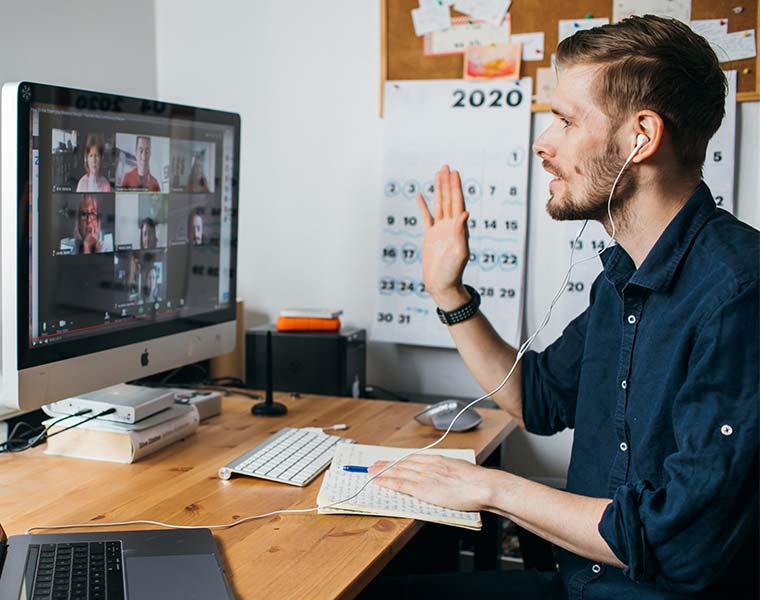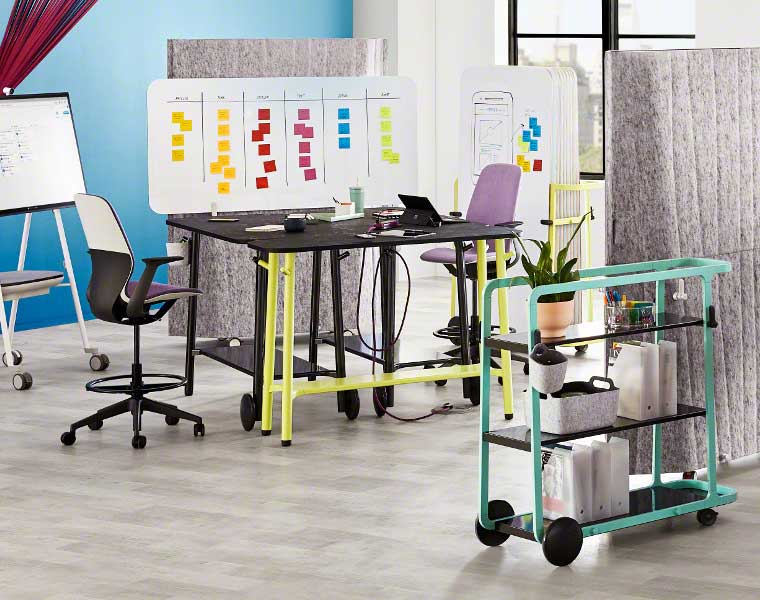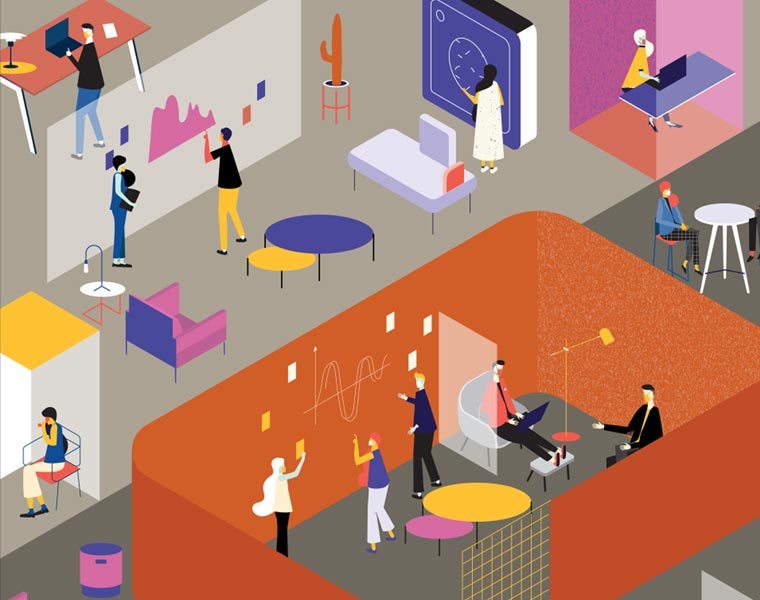Less than a year ago we shared our thoughts on the changing face of teamwork and how office design and workplace culture could facilitate things like hyper-collaboration and group problem-solving. Now, here we are, hopefully approaching the tail-end of a global health pandemic, and the concept of teamwork has transformed completely once again.
In our previous article on the topic of teamwork, we discussed how collaboration is about more than putting a group of people in a room together, around one big table and expecting them to perform. We talked about how, despite being centered around the notion of teamwork, efforts to encourage improved collaboration and shared problem-solving should actually pay more attention to the individuals involved. So, in other words – in order for an employee to be a productive member of a wider team, their unique requirements must first be considered.

In our original article, our experts recommended ways to create a more inclusive workplace design scheme and facilitate both digital and analogue creativity, as well as highlighting the importance of private focus in efficient group participation. The solutions put forward largely revolved around workplace technology, furniture, company culture and space configuration – all vital elements that are now being forced into evolution as a result of the ongoing COVID-19 crisis.
Managing teamwork in 2020 and beyond
Global lockdown has had a monumental impact on the working world and consequential attitudes and behaviours going forward. Working from home, agile working and increased flexibility have proven to be some of the most prolific benefits highlighted via having to operate in these new ways – approaches that we’re sure will significantly shape the working world as it continues to adapt and evolve. However, we think it’s also important to emphasise how vital face-to-face interaction and collaboration still is for breeding creativity and a happy, motivated workforce.

There is no denying then that remote working will become more prevalent going forward as employers and staff acknowledge the productivity and wellbeing benefits, nor that we’re on the verge of a workplace culture overhaul. However, as we touched upon in our article on how office fit out companies might respond to the post-pandemic climate, not everybody will want to adopt this full throttle approach to working from home.
Now is the time for learning how to adopt the right approach as and when it is called for. While there is a place for remote or home working for those with more introvert creative processes or roles which demand intense concentration, for many, collaboration and teamwork will be something best achieved through in-person creativity. Better communication will also be encouraged by coming together in a shared physical space so that body language, eye contact and heightened engagement can fuel idea-sharing and participation in group tasks.
In the article mentioned above, Penketh Interiors Workplace Consultant, Sam Noton predicts that there might even be what he dubs an “office renaissance”, where some people will want to be in the office more than they did pre-lockdown. Workers might have missed face-to-face interaction and tangible workplace culture so much in the past few months that we might witness a divide between those who now prefer remote work and those who benefit more from being a resident worker.
So, where does this leave the identity of teamwork?

How do businesses now bolster a connection between a distributed workforce to ensure communication and collaboration remain intact, whilst still future-proofing and retaining talent by adopting fresh, new approaches to teamwork simultaneously?
Here is our advice:
Update your workplace tech
Back in March we discussed the benefits of video conferencing during the Coronavirus pandemic and these advantages have only become more instrumental in maintaining ‘business as usual’ where possible. Video conferencing technology – including audio and camera equipment – is a tool that will be vital in keeping the distributed workforce connected and productive so now is the ideal time to invest. This will ensure those working remotely can still seamlessly touch base with teams working in the office.

Look for products which offer good quality audio, high resolution video, fast connections and multi-user participation so that collaboration can still be fruitful even when idea-sharing is not taking place face-to-face.
Regularly reinforce roles and responsibilities
For employees that have been working from home for the past few months, or for those who have been furlough for a period of time, strong teamwork going forward is going to require some preliminary groundwork. By this we mean reinforcing and reassuring staff about what their role is, where their responsibilities lay and why this is a crucial part of the overall team structure and performance. Of course, this element of managing teamwork is more related to culture and communication across the company than it is to design and resource.
Again, although remote working has many benefits, we believe that true culture and communication are best bolstered through face-to-face interaction and occupying the shared working environment.

Facilitate the concept of reverse mentoring
As the modern workforce becomes more physically dispersed and increasingly agile, businesses are going to rely on technology and digital tools as an anchor point for support. Encouraging more cross-collaboration between workforce generations in-person and also via digital means will foster a company-wide connectivity. Training the older generations on how to become more comfortable with modern behaviours and workplace tech is therefore vital and can be done through reverse mentoring, whereby younger employees train and coach on what they are more naturally in tune with that their more senior teammates.
Some other points worth mentioning before you go:
- Still allow people the time, space and privacy they need to concentrate and contribute most effectively both in the workplace and remotely. This might mean, for example, enabling them to refrain from joining a video call in order to focus on a particular task as an individual team member in the same way they would seek out a private or enclosed work setting in the physical environment.
- Don’t forget to stay social – be it meeting in small groups at a social distance for the time being, or hosting social sessions via video call, this kind of casual communication is crucial in building strong bonds that can then be influential in a professional capacity also.
- Don’t abandon face-to-face collaboration entirely – simply adapt and reimagine your collaboration, breakout and meeting spaces so that they are safe and compliant but still conducive to great teamwork.



